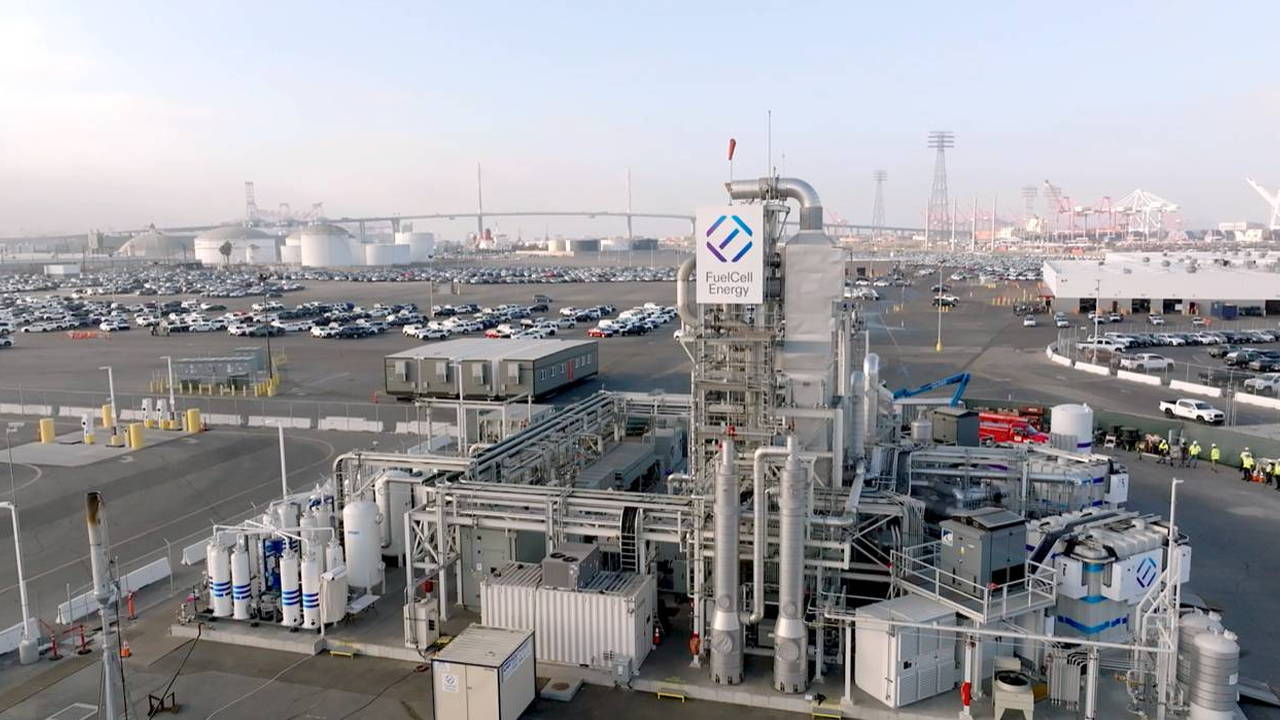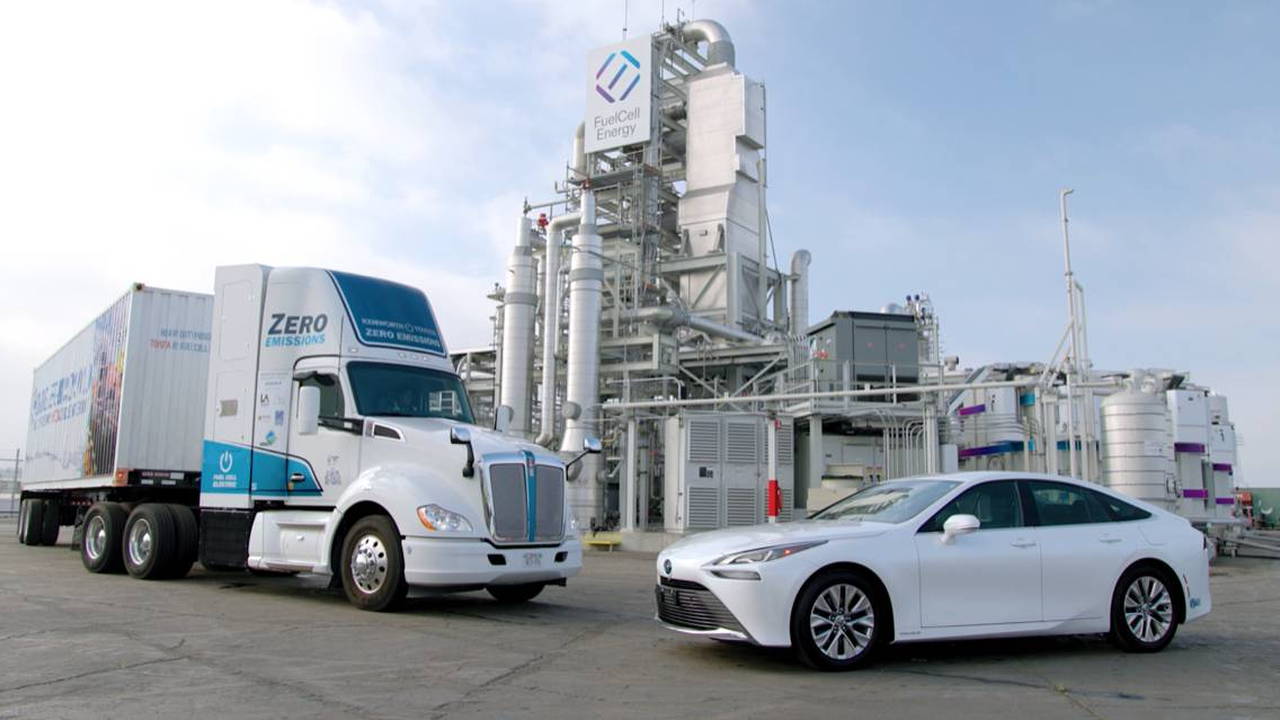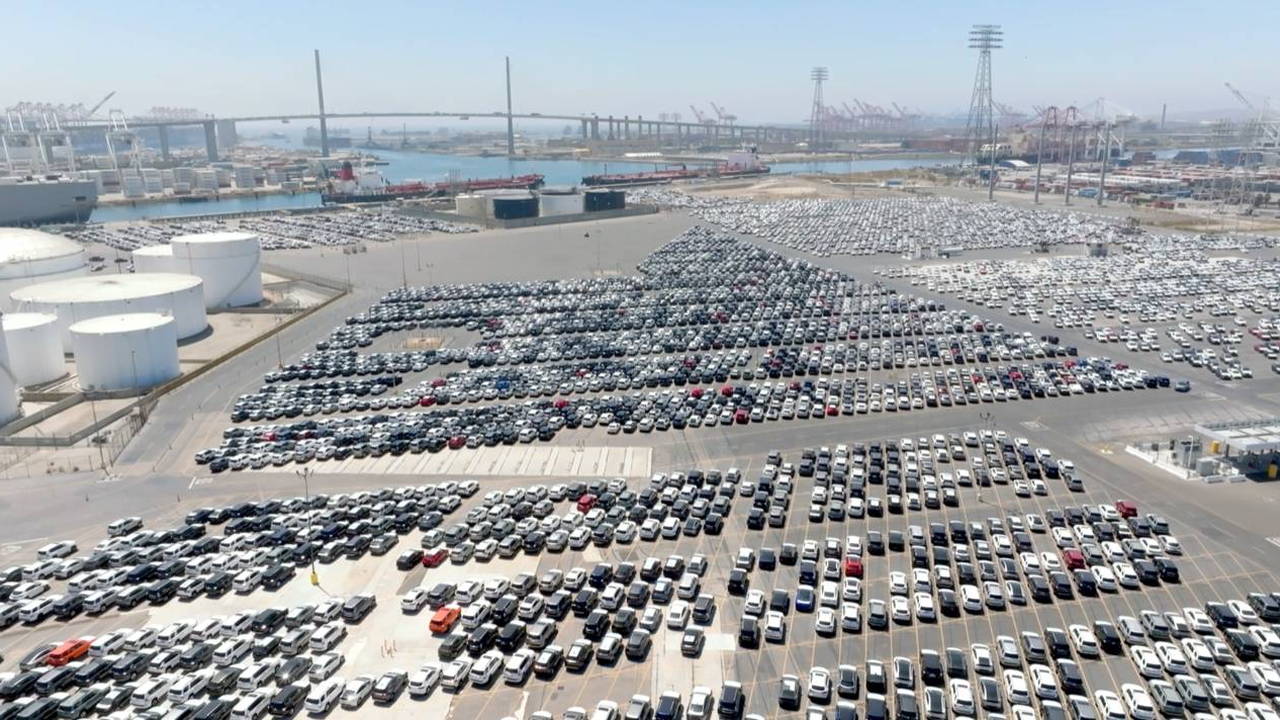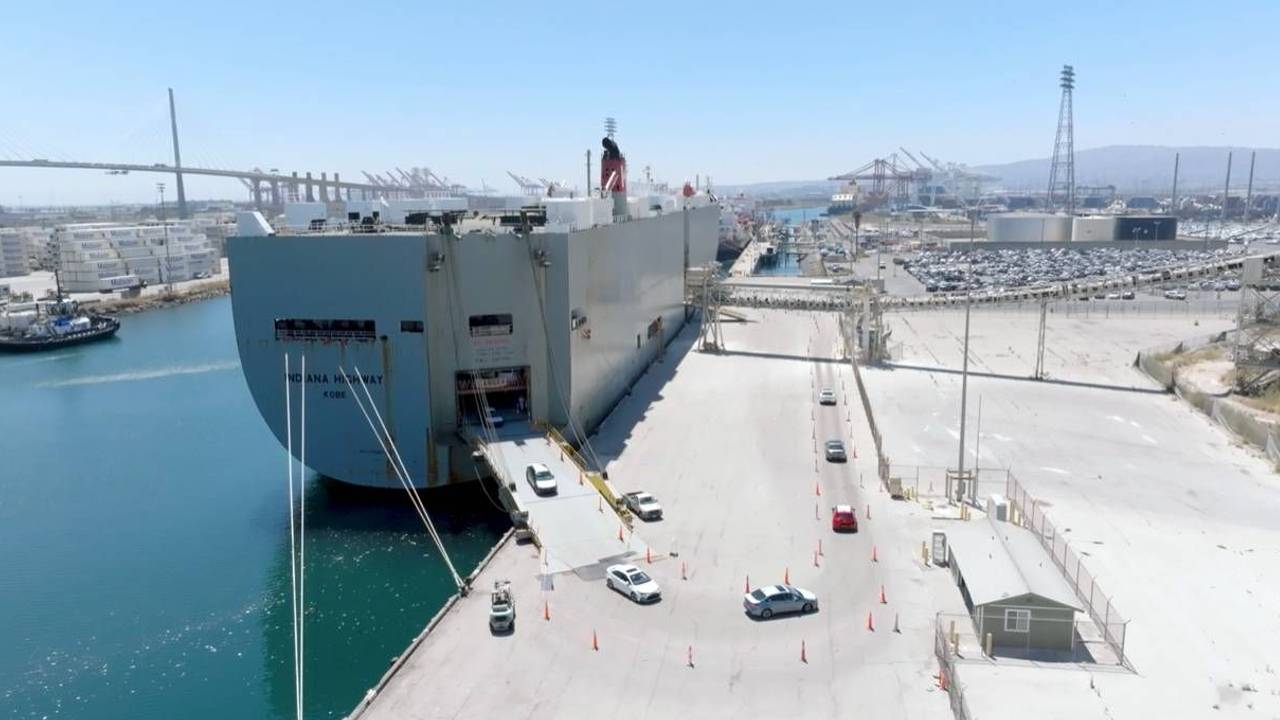Toyota’s ambitious project to take its busiest port in North America off the power grid is complete, the company reported Thursday.
While the Tri-gen plant, generating 2.3 megawatts of electricity—1.7 megawatts more than what the port typically uses—will completely cut the facility’s reliance on grid power, it will remain grid-connected. That’s because excess electricity not being used by the facility will be sold to Southern California Edison, under something called the California Bioenergy Market Adjustment (BioMAT) program, with enough to power almost 2,500 homes in the area annually.
Tri-gen will use agricultural methane to generate the electricity and produce up to 1,200 kg of hydrogen per day. The latter will go toward fueling Mirai vehicles as they come into port, and supplying fuel-cell-powered logistics systems and drayage trucks.
Toyota says that the fuel-cell plant will also generate 1,400 gallons of water per day, which will go toward washing cars at the port.
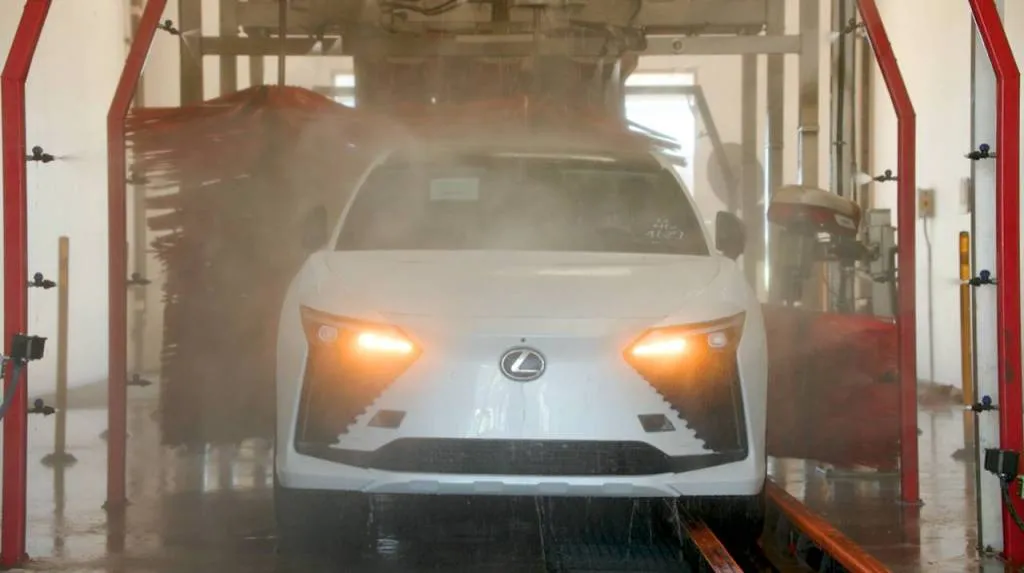
Lexus RZ getting car wash - Long Beach port
According to Toyota, Long Beach is its largest port for North American import/export, and it processes about 200,000 vehicles a year. It’s also the only port of entry for the Toyota Mirai fuel-cell sedan.
How does it work? The Tri-gen system, from FuelCell Energy, is a larger-scale distributed hydrogen system that receives agricultural biogas via a pipeline. That’s converted to hydrogen inside the system’s industrial-scale fuel-cell stacks.
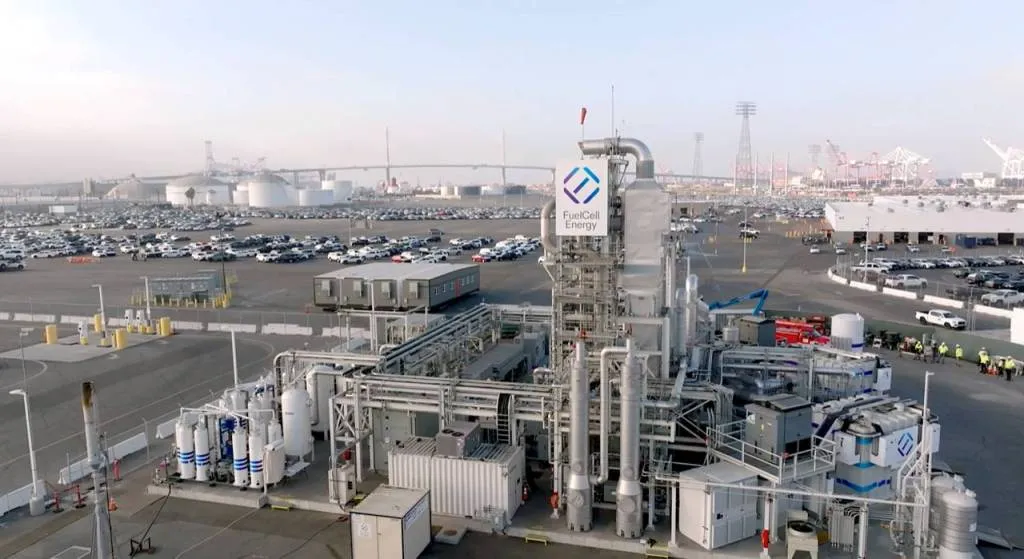
Toyota and FuelCell Energy - Long Beach
The system uses steam reformation, pushing the super-heated gas into the stacks, with excess heat and water produced, as well as hydrogen that’s collected and purified. The key difference with Tri-Gen versus standard steam reformation is that excess thermal energy from the fuel-cell system, rather than from burning more fuel, is used to reform hydrogen.
Toyota says there are “virtually no air pollutants” from the entire process. FuelCell Energy reports NOx emissions as being negligible, while greenhouse-gas emissions are about 40% less than conventional steam methane reformation with natural gas. In the math of carbon footprint, which can sometimes get quite fuzzy, the resulting hydrogen is considered carbon-free. But in the simpler calculations of equating it to what the grid would otherwise produce, it claims it will be averting six tons of smog-forming NOx and 9,000 tons of CO2 each year.
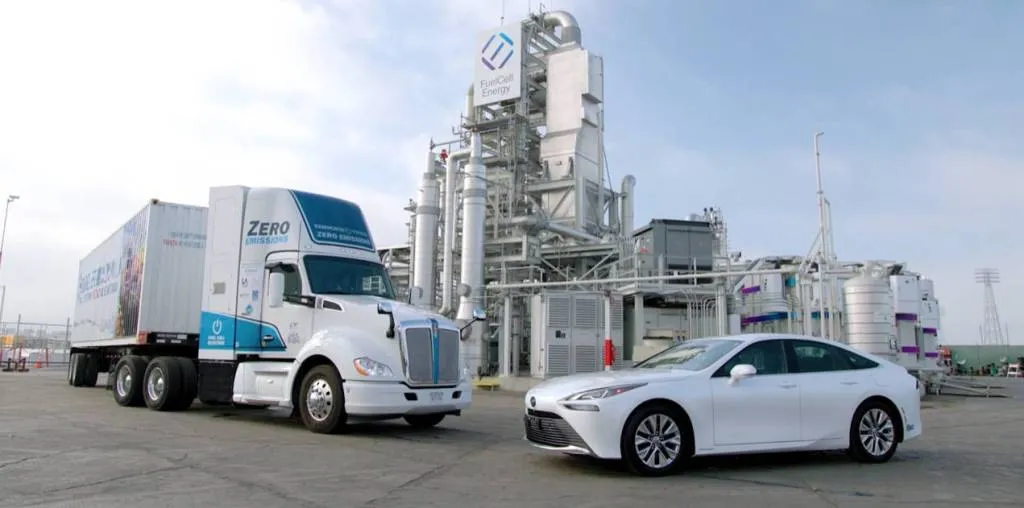
Toyota Mirai and fuel-cell semi, with FuelCell Energy at Long Beach
On-site, much of the hydrogen will go toward fueling short-haul hydrogen-powered semis being put to use around the port. These trucks, originally under what was called Project Portal with the ports of Los Angeles and Long Beach, have moved on to a second generation of the tech employing the latest-generation fuel-cell stack, and Toyota is making stacks for fuel-cell semis in Kentucky.
